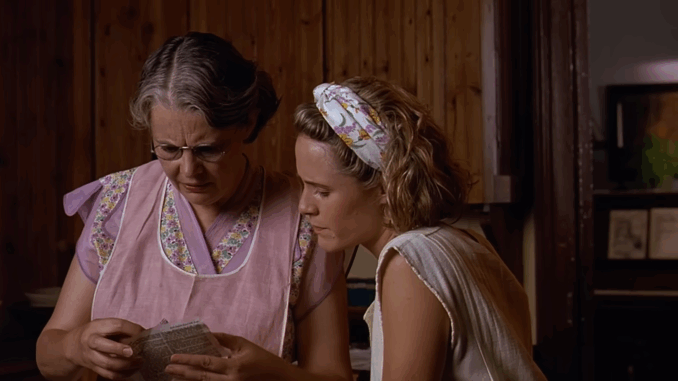
In the rich emotional landscape of Fried Green Tomatoes, where food, memory, and storytelling form the heart of healing, one quiet, easily overlooked object holds immense symbolic weight: Ruth’s photo album. Though it appears briefly, this album encapsulates the core of what the film is about — love preserved across time, identity woven into memory, and the human need to anchor our stories in something tangible.
📷 A Glimpse into Ruth’s World
The photo album is first shown in a soft, quiet moment. Ruth is flipping through its pages while sitting beside Idgie, her fingers pausing on pictures that bring back laughter, loss, and love. In a film that often shies away from direct exposition, this scene does something quietly radical: it acknowledges the life these two women built together, in private, outside of society’s approval.
The images — faded, black-and-white, deeply personal — are more than memories. They are acts of preservation. Of a life lived against the odds.
💔 Memory as Resistance
In an era and environment where Ruth and Idgie’s relationship could never be publicly celebrated, the album becomes a private archive of truth. Their love story, not recognized legally or culturally, finds its sanctuary in those pages.
To flip through the album is to say: We were here. We mattered. We loved.
Even after Ruth’s death, the album survives — a symbolic counter to the erasure so many queer relationships faced in early 20th-century America.
👵 Evelyn and the Album: A Mirror Across Time

Later, when Evelyn learns more about Ruth’s life, she too begins to understand the weight of memory. Although Evelyn does not directly inherit the album, its spirit influences her. She begins creating something of her own — collecting moments, stories, and eventually stepping into a life more fully her own.
In that sense, the photo album becomes intergenerational: its emotional power doesn’t stop with the people it pictures. It radiates outward, changing Evelyn, inspiring her to value what truly matters.
✍️ Storytelling Without Words
The album also serves as a storytelling device without dialogue. Unlike Ninny’s long narrations, the album speaks through silence:
-
A photo of Ruth holding her baby — maternal strength amid heartbreak.
-
Idgie and Ruth laughing near the café — defiance and joy in a world that disapproves.
-
A group shot of the café staff — community, diversity, chosen family.
Each image tells a layered story. The filmmakers knew what they were doing: they let these pictures speak for the unspeakable.
🧠 Emotional Anchors in Trauma and Loss
For Ruth, battling illness and separation from the world she once knew, the album is a grounding force. In times of fear or fading strength, the images remind her that she lived fully, loved deeply, and was never truly alone.
Psychologically, memory objects like these serve as anchors for those experiencing trauma or anticipating death. In Ruth’s case, it is also a legacy — her way of giving Idgie something to hold onto when she’s gone.
